High Mileage Lease: Is It Right for You?
April 14, 2021
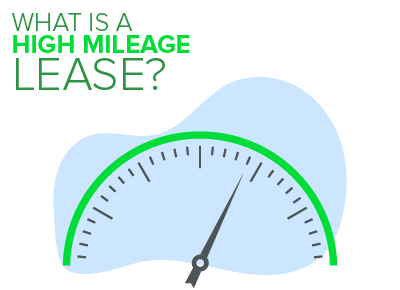

I am a serial entrepreneur and a consumer advocate. When I’m not helping car buyers, I love working on ventures that have a positive impact.
I run a cause marketing agency and serve on the board of Vayu Global Health where we are disrupting the medical industry and preventing the needless deaths of mothers and babies during childbirth.
You can potentially pay expensive excess mileage charges on a lease, but how can you avoid that while still enjoying the vehicle?
A high mileage lease is a potential solution that can allow you to enjoy the benefits of leasing without paying exorbitant fees for exceeding the mileage cap.
Of course, a high mileage lease is not always worth it, so how can you know if it is right for you?
Table of Contents
What is a High Mileage Lease?
Car leases come with a mileage limit, which is typically between 10,000 and 15,000 miles per year. Exceeding the mileage limit results in additional fees, up to 25 cents per additional mile.
Those who are likely to exceed a typical lease mileage limit may consider a high-mileage lease. A high mileage lease has a mileage cap that is higher than a usual lease. While a high mileage lease will be more expensive, it will not cost you as much as exceeding mileage charges on a regular lease.
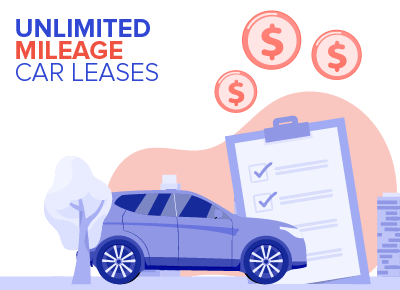 Unlimited Mileage Car Leases
Unlimited Mileage Car Leases
Unlimited mileage car leases also exist, though they are very rare. Unlimited mileage leases are not as popular due to the high cost.
With an unlimited mileage car lease, the car's residual value at the end of the lease will be set much lower than with a limited mileage contract, which means you can expect higher monthly payments.
Most often, an unlimited mileage lease will cost you as much as buying the car new. However, it still provides you with mileage flexibility, no loan obligations at the end of the lease term, and the ability to upgrade to the newest model after your lease.
What are Mileage Limits?
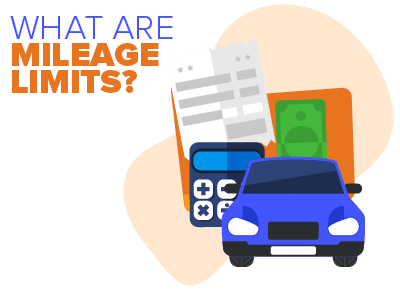 Mileage limits for a standard lease range from 10,000 to 15,000 miles. The mileage limits for a high mileage lease generally start at around 20,000 miles per year but can vary based on the lease terms you negotiate.
Mileage limits for a standard lease range from 10,000 to 15,000 miles. The mileage limits for a high mileage lease generally start at around 20,000 miles per year but can vary based on the lease terms you negotiate.
Here is an example of how the mileage limits can impact the cost of your lease.
- The standard 36-month, 36,000-mile lease of a 2018 Honda Accord LX Sedan is $289, with a residual value of $14,189 at the end of the lease.
- For a high mileage loan that’s 36 months and 100,00 total miles, the monthly payment would be $467 because the residual value would be $8,300 at the end of the lease due to the extra miles.
- To get a 100,000-mile limit rather than a 36,000-mile limit, the lessee would pay an additional $178 per month.
When Should I Get a High Mileage Lease?
Car shoppers that drive more than 10,000 to 15,000 miles per year but are interested in frequently getting new models should consider a high mileage lease. While the high mileage lease is more expensive, you can drive the car more without paying fees for exceeding the mileage. This may be a good option for those who frequently take long road trips or have an extensive commute.
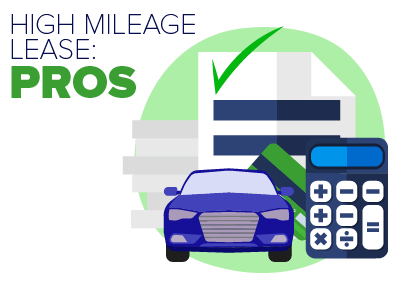 Advantages of a High Mileage Lease
Advantages of a High Mileage Lease
- Lower Costs. While the lease will cost more, it will not cost as much as the fees for exceeding the mileage limits on a standard lease.
- Flexibility. A lease with more miles gives you freedom and flexibility to use your vehicle for commuting and travel without the added worry of going over lease miles.
- Reduce Sales Tax. Many people can deduct lease payments as an expense. The higher lease payments mean you’ll pay less in sales tax.
When Should I Not Get a High Mileage Lease?
While a high mileage lease has its advantages, it’s not for everyone. Those who do not anticipate exceeding the typical mileage cap should probably avoid a high mileage lease. As long as you stay within the mileage cap, a standard lease is more affordable.
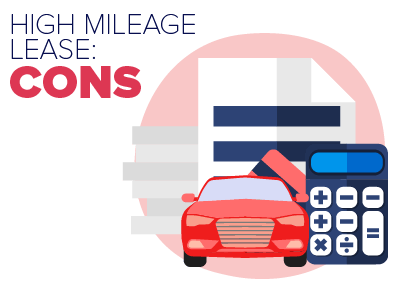 Drawbacks of a High Mileage Lease
Drawbacks of a High Mileage Lease
- Possibility of Ending Upside Down. When you owe more on your lease than the vehicle is worth, you are underwater in your lease. You may pay more for a high mileage lease than buying the vehicle.
- Higher Monthly Payments. If you won’t use all of the miles that a high mileage lease affords, it is not worth the higher monthly payment.
- Warranty. Many warranties include a three-year or 36,000-mile warranty. If you plan to drive the vehicle more than that, you may need to purchase an extended warranty or pay additional repair and maintenance costs after the warranty runs out.
How to Get a High Mileage Lease
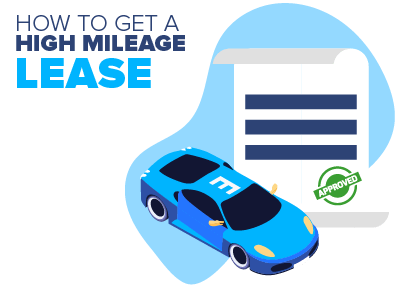
- Estimate Your Miles. Carefully examine how many miles you plan to put on the vehicle each year. You don’t want to pay for miles you won’t use.
- Higher Mileage Cap. The standard lease is what most dealerships will offer unless asked for a high mileage lease. Inquire about the different options available.
- Negotiate the Terms. Leases are negotiable. You can negotiate many parts of a lease, including the annual mileage limit. Know some important questions to ask when leasing a car.
- Carefully Read the Fine Print. Before signing any lease, run the numbers again to make sure you get a fair deal that best suits your needs.
Frequently Asked Questions
What is a high mileage lease?
A high mileage lease is a lease with a larger mileage cap than a standard lease. A standard lease generally includes a cap between 10,000 and 15,000 miles per year, whereas a high mileage lease can begin around 20,000 miles per year.
How many miles is a high mileage lease?
The mileage cap in a high-mile lease varies based on the terms of the lease. You can negotiate the mileage cap and lease terms with the dealership. Many high mileage leases allow for 100,000 miles over a 3-year term.
What happens if you exceed the mileage limit?
If you exceed the mileage limit on a lease, you will have to pay a fee for every extra mile driven. The penalty is outlined in your lease but can be up to $.25 per mile or $250 for every 1,000 miles over. To prevent excess mileage fees, you can opt for a high mileage lease from the beginning or consider a lease buyout.
What are the advantages of a high mileage lease?
- Freedom to drive the vehicle without worrying about the mileage.
- Avoid excess mileage fees that add up fast.
- Know your cost upfront
- Reduce sales tax by deducting your high mileage lease as an expense
What are the disadvantages of a high mileage lease?
- You may end up owing more on the lease than the value of the vehicle.
- Higher monthly payments, which can result in you paying for miles you do not use.
- Outdrive the warranty, meaning you must buy an extended warranty or pay for repairs and maintenance once the warranty expires.
What are alternatives to a high mileage lease?
Instead of a high mileage lease, you can consider:
- Buying the car. Oftentimes, financing will be less expensive and will still offer the flexibility to drive as many miles as you want.
- A lease buyout if you unexpectedly went over the mileage cap.
- Paying the extra mileage fees at the end of the lease.
Should I get a high mileage lease?
If you drive more miles per year than a standard lease but feel that a lease best suits your lifestyle, then a high mileage lease may be for you. Always shop around for the best deal, and compare a high mileage lease to buying the car to make sure you do not end up upside down in the lease.
Posted in Car Buying Tips |







